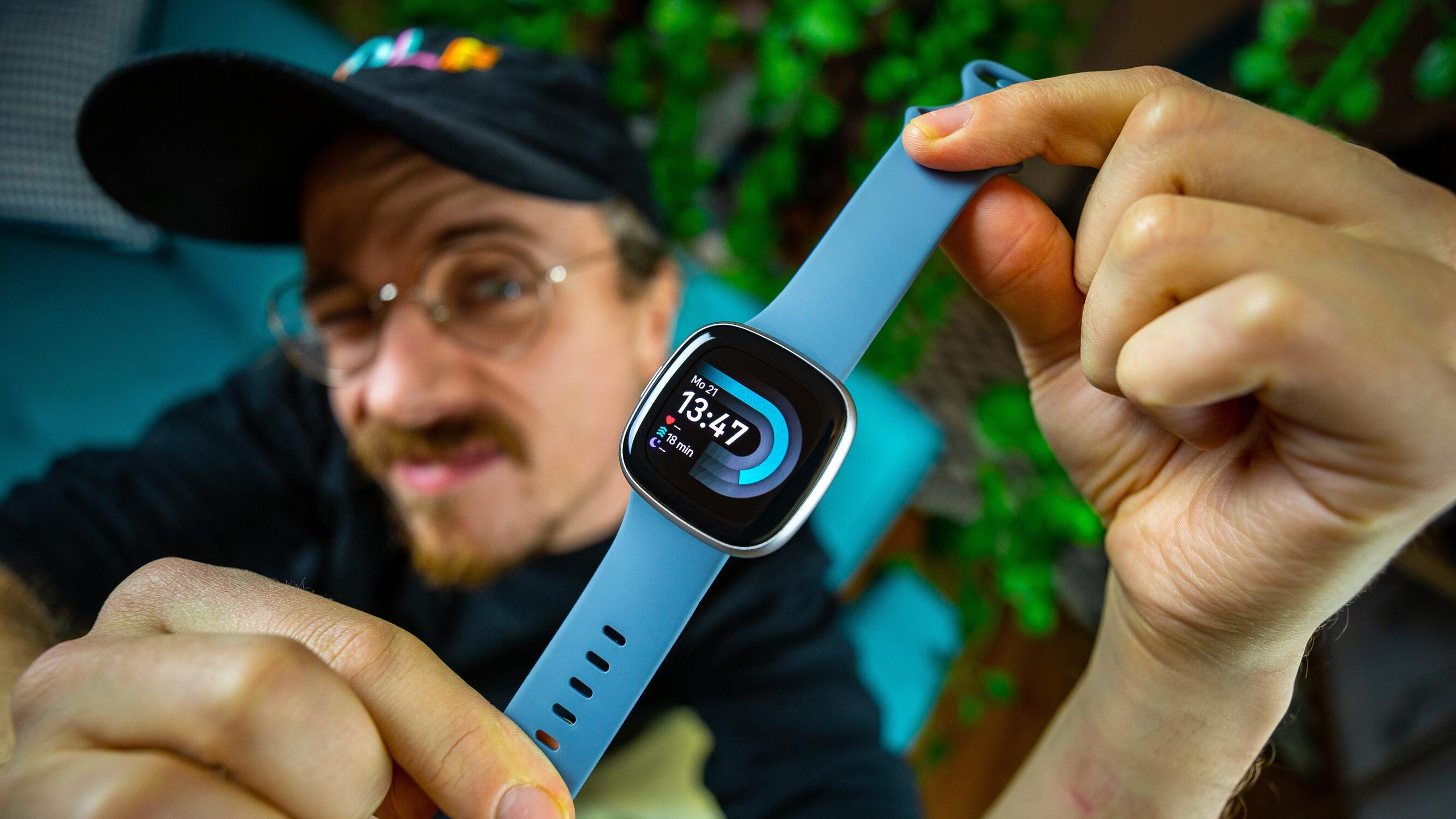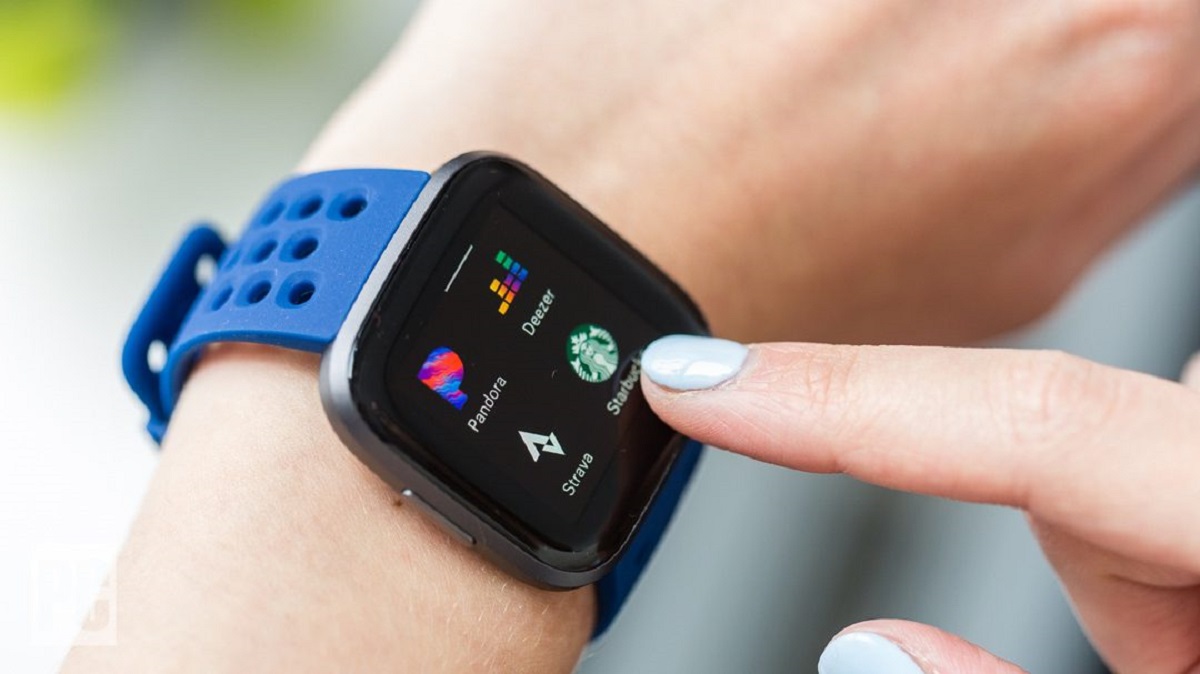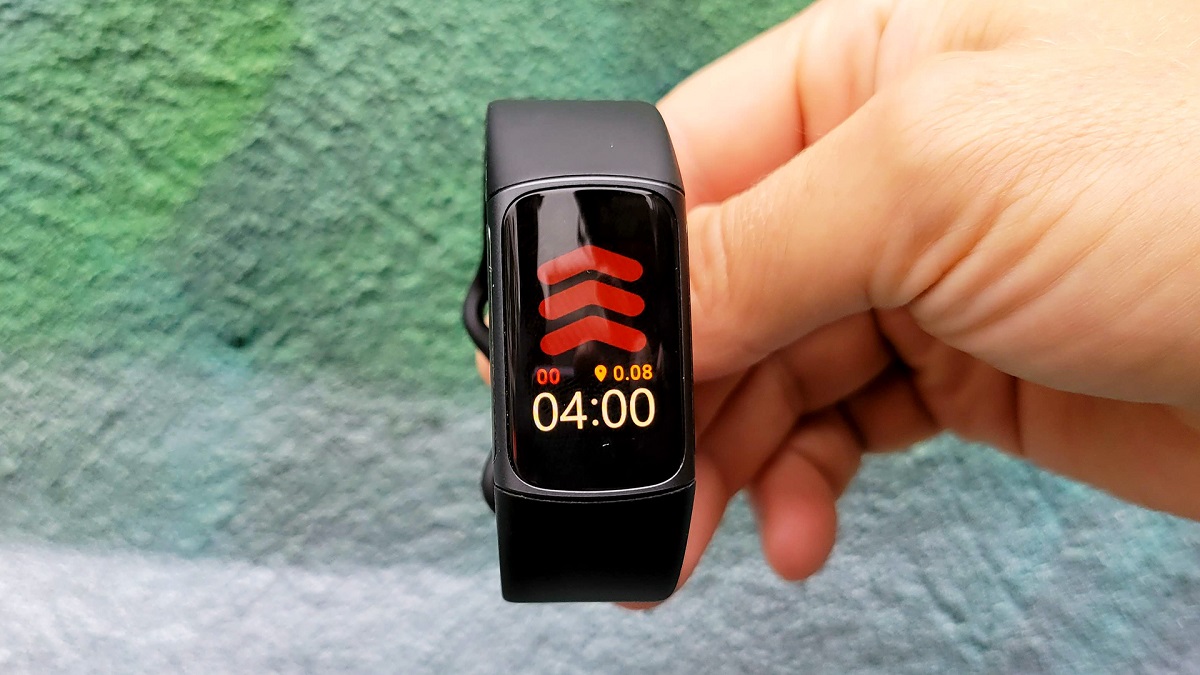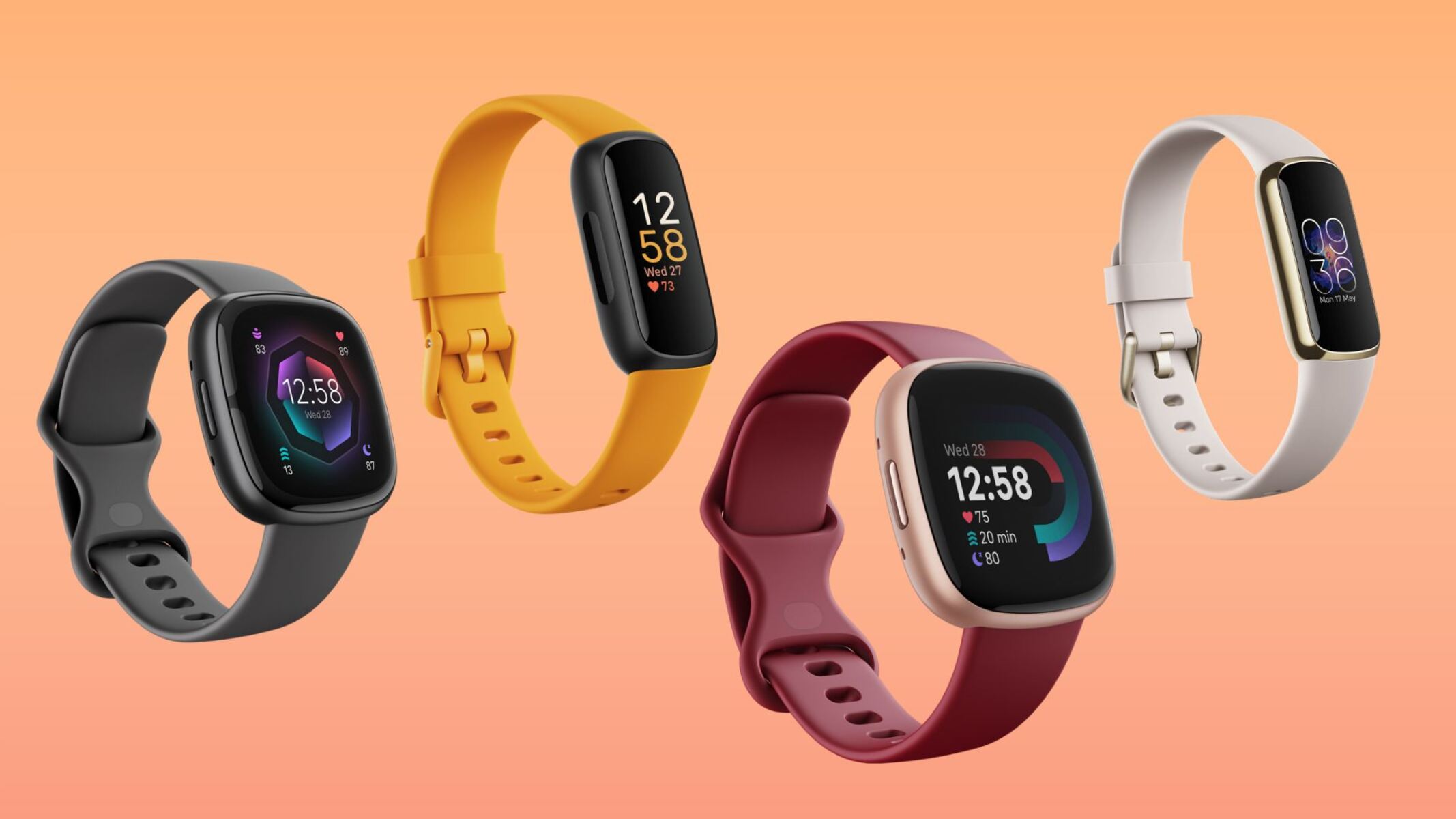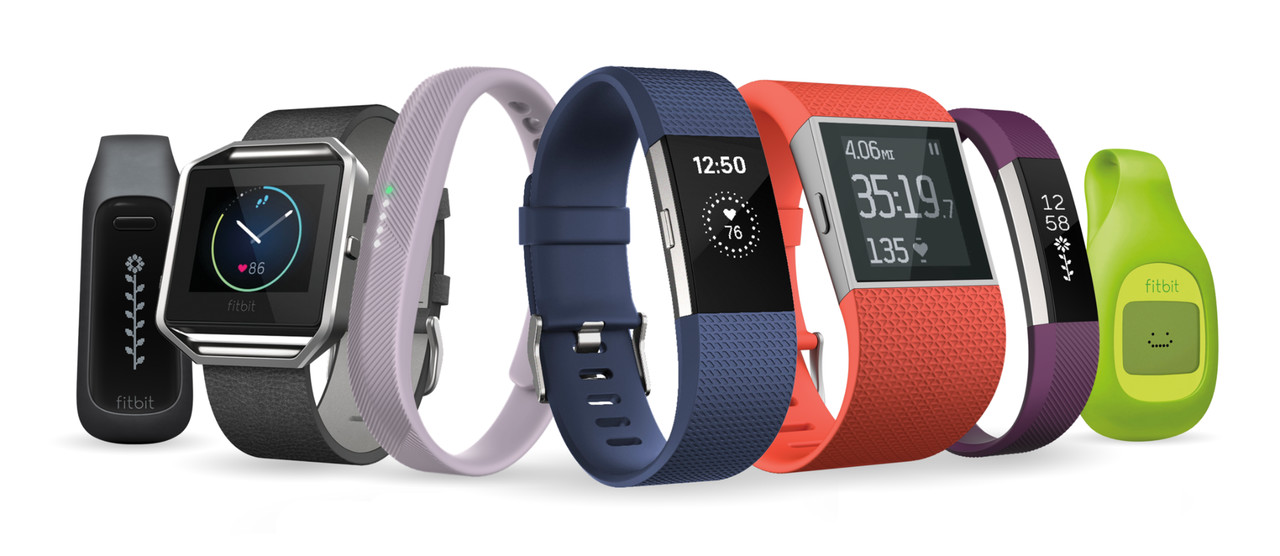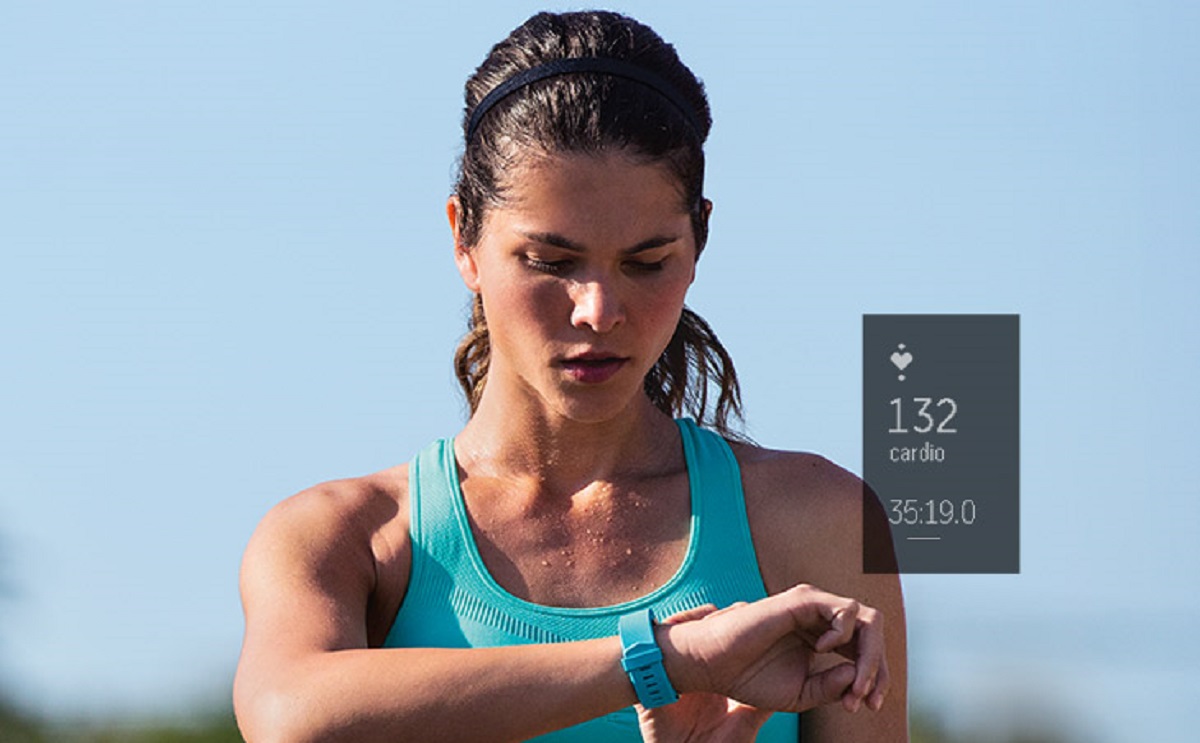Introduction
Cycling is not only a great form of exercise but also a fantastic way to explore the outdoors and improve your overall well-being. Whether you're a seasoned cyclist or just starting out, tracking your cycling activity can provide valuable insights into your performance, progress, and overall health. Fitbit, a leading wearable technology company, offers a range of features specifically designed for cyclists, allowing you to monitor and analyze your rides with precision.
In this comprehensive guide, we will delve into the world of cycling tracking on Fitbit, exploring the various metrics and functionalities that can help you optimize your cycling experience. From setting up cycling tracking on your Fitbit device to understanding key metrics and utilizing the data to enhance your performance, we'll cover everything you need to know to make the most of your cycling endeavors.
Whether you're aiming to improve your speed, endurance, or overall fitness, leveraging the power of Fitbit's cycling tracking capabilities can be a game-changer. By the end of this guide, you'll be equipped with the knowledge and tools to elevate your cycling routine and embark on a journey of continuous improvement.
So, saddle up, clip in, and get ready to unlock the full potential of your cycling activity with Fitbit as your trusted companion. Let's dive into the world of cycling tracking and discover how you can take your rides to the next level.
Setting up Cycling Tracking on Fitbit
To begin your journey of tracking cycling activity on Fitbit, you'll first need to ensure that your Fitbit device is equipped with the necessary features and settings to accurately capture and record your rides. Follow these steps to set up cycling tracking on your Fitbit device:
-
Selecting the Cycling Exercise Mode: Start by accessing the exercise modes on your Fitbit device. Navigate to the "Exercise" or "Workout" section and locate the option for cycling. Depending on the specific model of your Fitbit device, you may find cycling listed as an available exercise mode. If it's not readily available, you may need to customize your exercise shortcuts to include cycling as one of the preferred activities.
-
Customizing Cycling Settings: Once you've identified the cycling exercise mode, you can further customize the settings to align with your preferences and cycling style. This may include specifying display metrics such as distance, duration, heart rate, and calories burned. Additionally, some Fitbit devices offer the option to enable GPS tracking for outdoor rides, providing accurate route mapping and distance measurements.
-
Ensuring Device Compatibility: If you're using a Fitbit tracker with GPS capabilities, such as the Fitbit Charge 4 or Fitbit Ionic, ensure that the GPS feature is enabled and functioning properly. This is particularly important for cyclists who wish to track their routes, elevation changes, and pace with precision. It's advisable to sync your Fitbit device with the companion mobile app to verify GPS connectivity and signal strength.
-
Securing a Comfortable Fit: Before embarking on your cycling adventures with Fitbit, ensure that your device is securely fastened and comfortably positioned on your wrist or cycling gear. A secure fit is essential to accurately capture your heart rate, movement, and exertion levels during the ride. For cyclists using GPS-enabled Fitbit devices, it's crucial to maintain consistent contact between the device and the skin to optimize GPS tracking accuracy.
By following these steps, you can effectively set up cycling tracking on your Fitbit device, empowering you to seamlessly monitor and record your cycling activities with precision and convenience. With the foundation in place, you're ready to dive into the world of cycling metrics and performance analysis offered by Fitbit, gaining valuable insights into your rides and progress.
Understanding Cycling Metrics on Fitbit
When it comes to tracking your cycling activity on Fitbit, understanding the metrics provided is essential for gaining valuable insights into your performance and progress. Fitbit offers a range of cycling-specific metrics that can help you evaluate various aspects of your rides, enabling you to make informed decisions and adjustments to optimize your cycling experience. Here are the key cycling metrics available on Fitbit devices:
1. Distance Traveled:
The distance traveled metric on Fitbit provides a comprehensive overview of your cycling routes, allowing you to monitor the total distance covered during your rides. Whether you're exploring scenic trails or commuting through urban landscapes, tracking the distance traveled can help you set distance-based goals, track your commuting mileage, and compare the distances of different cycling routes.
2. Speed and Pace:
Fitbit captures real-time speed and pace data during your cycling activities, offering valuable insights into your cycling performance. Whether you're aiming to increase your speed for fitness purposes or maintain a consistent pace for endurance training, monitoring your speed and pace metrics can help you gauge your cycling intensity and make adjustments to achieve your desired workout objectives.
3. Elevation Gain:
For cyclists conquering hilly terrains and challenging inclines, the elevation gain metric on Fitbit provides crucial information about the vertical ascent achieved during your rides. This metric is particularly valuable for assessing the intensity of your cycling routes, identifying elevation-based training opportunities, and tracking your progress in conquering challenging uphill segments.
4. Heart Rate Monitoring:
Fitbit devices equipped with heart rate monitoring capabilities offer insights into your cardiovascular exertion during cycling activities. By tracking your heart rate zones and fluctuations throughout your rides, you can gauge the intensity of your workouts, optimize your training zones, and ensure that you're effectively challenging your cardiovascular system for improved fitness and performance.
5. Caloric Expenditure:
Understanding the caloric expenditure metric on Fitbit allows you to assess the energy expenditure associated with your cycling activities. Whether you're cycling for weight management, endurance training, or overall fitness, monitoring your caloric expenditure can help you align your nutritional intake with your energy expenditure, ensuring that your cycling routine supports your health and fitness goals.
By comprehensively understanding these cycling metrics on Fitbit, you can gain a holistic view of your cycling performance and progress. Leveraging these insights, you can tailor your cycling workouts, set achievable goals, and make data-driven adjustments to elevate your cycling experience. With a clear understanding of these metrics, you're well-equipped to harness the power of Fitbit's cycling tracking capabilities and embark on a journey of continuous improvement and enjoyment in your cycling pursuits.
Using Fitbit to Analyze Your Cycling Performance
After diligently tracking your cycling activities with Fitbit, you're presented with a wealth of data that holds the key to unlocking insights into your cycling performance. Fitbit's intuitive platform and comprehensive analytics empower you to delve into the intricacies of your rides, enabling you to analyze, interpret, and leverage the data for continuous improvement.
Fitbit's user-friendly interface consolidates your cycling metrics, providing a clear visualization of your performance over time. The ability to view historical data allows you to identify trends, patterns, and fluctuations in your cycling activity, offering valuable context for assessing your progress and setting realistic goals.
One of the standout features of using Fitbit to analyze your cycling performance is the capability to overlay multiple metrics, facilitating a comprehensive assessment of your rides. By juxtaposing metrics such as speed, heart rate, and elevation gain, you can discern correlations and dependencies, gaining a deeper understanding of the factors influencing your cycling performance.
Fitbit's data segmentation tools enable you to drill down into specific segments of your rides, such as uphill climbs, sprints, or leisurely segments. This granular analysis empowers you to pinpoint areas for improvement, celebrate achievements, and tailor your training regimen to address specific aspects of your cycling performance.
The integration of heart rate data with cycling metrics offers a nuanced perspective on your cardiovascular exertion during rides. By examining your heart rate zones in relation to speed, elevation, and duration, you can optimize your training intensity, identify opportunities for cardiovascular conditioning, and ensure that your rides align with your fitness objectives.
Fitbit's GPS tracking capabilities further enrich the analysis of your cycling performance by providing detailed route maps, elevation profiles, and pace charts. This spatial visualization of your rides not only adds a layer of engagement to your performance analysis but also facilitates the identification of optimal cycling routes, exploration of new terrains, and comparison of performance across different cycling environments.
In essence, using Fitbit to analyze your cycling performance transcends mere data review; it's a journey of self-discovery, optimization, and empowerment. By immersing yourself in the wealth of cycling insights offered by Fitbit, you can harness the transformative potential of data-driven decision-making, propelling your cycling endeavors to new heights of achievement and fulfillment.
Tips for Improving Your Cycling Activity
-
Diversify Your Routes: Explore a variety of cycling routes to keep your rides engaging and challenging. Diversifying your routes not only adds excitement to your cycling adventures but also exposes you to different terrains, elevations, and environmental conditions, contributing to a well-rounded cycling experience.
-
Interval Training: Incorporate interval training into your cycling routine to enhance your speed, endurance, and overall performance. By alternating between periods of high-intensity efforts and active recovery, you can push your limits, improve your cardiovascular fitness, and break through performance plateaus.
-
Focus on Cadence: Pay attention to your cadence, which refers to the revolutions per minute (RPM) of your pedals. Maintaining an optimal cadence can improve your cycling efficiency, reduce strain on your muscles, and promote a smoother pedal stroke. Experiment with different cadence ranges to find the cadence that suits your riding style and terrain.
-
Cross-Training: Supplement your cycling regimen with cross-training activities such as strength training, yoga, or swimming. Cross-training helps balance your muscle development, prevents overuse injuries, and enhances overall fitness, contributing to improved cycling performance and resilience.
-
Nutritional Support: Prioritize proper nutrition to fuel your cycling endeavors. Ensure that your pre-ride and post-ride meals are well-balanced, providing a mix of carbohydrates, proteins, and healthy fats. Stay hydrated during your rides and consider incorporating energy-boosting snacks for longer cycling sessions.
-
Rest and Recovery: Recognize the significance of rest and recovery in optimizing your cycling performance. Adequate rest allows your muscles to repair and adapt to the demands of cycling, reducing the risk of burnout and enhancing your overall resilience. Incorporate rest days into your training schedule and prioritize quality sleep for optimal recovery.
-
Technical Skill Enhancement: Invest time in honing your technical cycling skills, such as cornering, descending, and efficient gear shifting. Mastering these skills not only enhances your safety on the road but also improves your overall cycling proficiency, confidence, and enjoyment.
-
Community Engagement: Join cycling groups, clubs, or online communities to connect with fellow cyclists, share experiences, and gain valuable insights. Engaging with a community of cyclists can provide motivation, support, and opportunities for collaborative rides, fostering a sense of camaraderie and shared passion for cycling.
By embracing these tips and integrating them into your cycling routine, you can elevate your cycling activity, achieve new milestones, and foster a fulfilling and sustainable cycling journey. Whether you're aiming to conquer challenging routes, improve your fitness, or simply savor the joy of cycling, these tips serve as invaluable tools for continuous growth and enjoyment in your cycling pursuits.
Conclusion
In conclusion, the fusion of cycling and wearable technology, exemplified by Fitbit's comprehensive cycling tracking capabilities, has ushered in a new era of personalized and data-driven cycling experiences. By seamlessly integrating advanced metrics, intuitive analysis tools, and a user-centric approach, Fitbit empowers cyclists to elevate their rides, optimize their performance, and embark on a journey of continuous improvement.
As you embark on your cycling endeavors with Fitbit as your trusted companion, you are not merely engaging in physical activity; you are immersing yourself in a world of insights, empowerment, and self-discovery. The ability to track your cycling activities with precision, analyze your performance with depth, and draw inspiration from a global community of cyclists underscores the transformative potential of the cycling experience with Fitbit.
With every pedal stroke and every climb, Fitbit stands as a beacon of support, guiding you toward your cycling aspirations and celebrating your achievements. Whether you're conquering challenging terrains, pushing your limits in training, or simply relishing the freedom of the open road, Fitbit's cycling tracking capabilities serve as a steadfast companion, enriching your rides with purpose, meaning, and fulfillment.
As you navigate the dynamic landscape of cycling, fueled by the insights and encouragement provided by Fitbit, remember that your cycling journey is a reflection of your resilience, dedication, and unwavering spirit. Every ride is an opportunity to learn, grow, and revel in the joy of movement, knowing that Fitbit is there to capture your milestones, illuminate your progress, and inspire you to reach new summits.
In the grand tapestry of cycling, where every route tells a story and every turn unveils a new adventure, Fitbit stands as a testament to the union of innovation and passion. It is a testament to the unyielding pursuit of excellence, the celebration of diversity in cycling experiences, and the unwavering commitment to supporting cyclists at every stage of their journey.
So, as you prepare for your next ride, fueled by the knowledge and motivation derived from Fitbit's cycling tracking capabilities, remember that each moment on the saddle is an opportunity to embrace your potential, savor the beauty of the ride, and revel in the transformative power of cycling with Fitbit by your side. Embrace the journey, cherish the progress, and let Fitbit illuminate the path to a world of limitless cycling possibilities.








